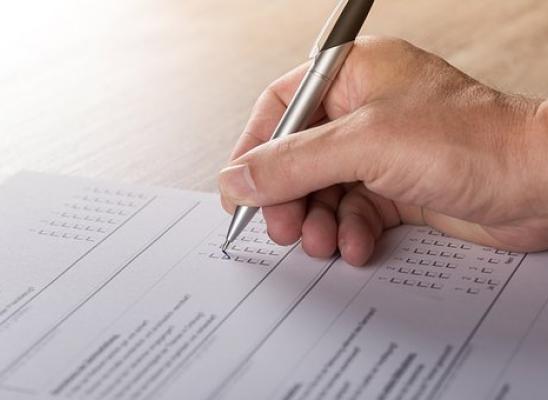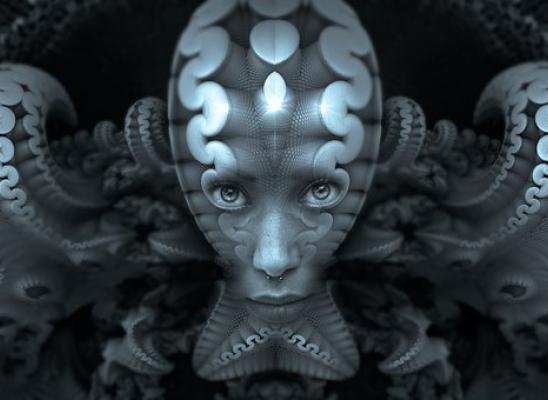The Role of Self in Hair-Pulling Disorder

Online test
Find out the severity of your symptoms with this free online test
Trichotillomania, also known as hair-pulling disorder (HPD), could be more common than originally thought. In fact, approximately 2% of the general population struggles with HPD at any given time. But, because HPD sufferers tend to be ashamed of their behaviors, many do not seek treatment, leaving many cases unreported.
Researchers suggest that hair-pulling tendencies typically present between 9- and 13-years-old. Because this behavior typically arises near or during puberty, HPD and OCD can impact your sense of self (i.e. personality and character traits), identity formation, and self-concept. They can also affect your psychosocial functioning – i.e. your confidence level, self-efficacy, and overall self-esteem – all important factors that not only determine your quality of life, but also impact your social, academic, and even adult functioning.
Both HPD and OCD can stem from parental discord, a divorce, remarriage, switching schools, a break-up, the birth of a new sibling, a chronic illness, separation from loved ones and friends, the death of a loved one, friend, or pet, moving to a new state, bullying (as the victim) a traumatic experience, or simply coming-of-age (puberty). According to this research, HPD in children can be a result of a loss of some sort.
A common hallmark of HPD is depression, anxiety, and OCD. Some mental health experts therefore view HPD and OCD as linked conditions, but not the same. Studies suggest that trichotillomania falls into the category of body-focused repetitive behaviors (BFRBs), an anxiety-based condition that causes you to engage in stress-relieving behaviors (tugging or pulling your hair).
These behaviors are hard to stop. In fact, they can lead to an identity crisis, a poorly formed identity, and/or a severely damaged body image, and/or self-esteem. Thus, it doesn’t matter if you struggle with OCD or HPD, you are still at risk for a wide range of identity and sense of self issues.
Note: Research conducted on trichotillomania or HPD is sparse, so additional studies are needed to fully determine how this condition and related disorders affect the overall psychosocial functioning of people with mental health conditions like HPD and OCD. The hope is that this research will help those affected by HPD learn how to better manage their conditions.
What Causes Someone to Pull Their Hair Out?
Ultimately, the exact cause of hair-pulling varies from person-to-person. Sometimes, hair-pulling stems from something as harmless as playful bantering, while other times; this behavior originates as the result of a distressing or traumatic event. Regardless of the exact origin, hair-pulling can lead to low self-esteem, negative self-image, feelings of unattractiveness, and body dissatisfaction. And, although these reactions are common, they are also heavily linked to anxiety and depression.
People with HPD tend to believe they can get away with hair-pulling behaviors because the scalp injuries, shortened hair, and bald spots can be easily covered-up with various hairstyles and wigs. This allows the behavior to continue with little-to-no risk of “discovery.” Many people with HPD are afraid of what others will think of them, if they find out about their condition, so they hide it from others – as a way to avert disapproval.
In fact, a 2016 study found that disapproval or approval from friends, family, and/or society, in regards to how a person with HPD looks (physical appearance) plays an important role in how this person views and feels about himself or herself. Thus, researchers have concluded that one’s perception can have a long-term effect on their identity formation, personality, self-esteem, and the intensity of his or her condition.
How Does Hair-Pulling Impact One’s Identity and Sense of Self?
The general consensus amongst mental health experts is that HPD negatively impacts your self-esteem, self-confidence, identity, body scheme, and self-concept. In fact, one study found that hair-pulling does affect your sense of self, identity, and self-esteem or vice versa. As a result, researchers have concluded that people with HPD have an increased risk of developing body dissatisfaction and/or experiencing a decline in self-esteem or sense of self.
Similarly, another study found that people with HPD are vulnerable to psychosocial issues, such as neuroticism, anxiety, anger, hostility, depression, self-consciousness, poor self-esteem, impulsivity, and hypersensitivity to stress. Researchers have also found that some people with HPD are prone to exhibiting symptoms that are traditionally associated with borderline personality disorder.
Research suggests that people, who pull their hair out and picked at their skin typically have a poorer self-esteem and sense of self than people, who only pull their hair out. Thus, study results indicate that utilizing body scheme and body image techniques, along with self-esteem and sense of self strategies, in treatment plans could help people stop hair-pulling behaviors.
How Are Your Body Scheme and Self-Evaluation Affected When You Have HPD?
Body scheme involves having a clear understanding of where your body parts (i.e. organs, nervous and sensory systems, hair, etc.) are located in your body and how they function. When you have body scheme issues or (BSD), you have a hard time pinpointing where your various body parts are located. As a result, your ability to engage in normal daily activities becomes impeded.
For instance, you may have a hard time combing or brushing your hair, getting dressed, or even brushing your teeth. You may even have a hard time responding to instructions or following directions, especially when it involves body movements (i.e. raising your arms to brush, comb, wash, or style your hair). It involves self-awareness – something that decreases when one performs hair-pulling behaviors that can result in the state of trance.
But, how do body scheme, body image, and identity equate to HPD?
People with HPD tend to withdraw from “normal” activities, such as socializing with others, hanging out with their friends, participating in sports, attending parties, celebrations, or get-togethers, etc. because they know others will notice their hair loss, bald spots, and/or scalp wounds and their secret will be discovered.
Unfortunately, however, this fear of being discovered often leads to even more anxiety, depression, self-isolation, shame, embarrassment, and in some cases, even poor academic or job performances. This fear also affects how you see your body and yourself, in general. As a result, it can prevent you from developing a strong sense of self or identity.
How Does HPD Affect Psychosocial Development or Functioning?
Psychosocial functioning is a measure of how well you “fit in,” “function within,” or psychologically develop within your environment. It also involves your social skills and how well you are “adapting to” the world, in general.
Psychosocial development begins at birth and continues into an adult. It involves 8 stages: (1) Trust vs. Mistrust, (2) Autonomy vs. Shame and Doubt, (3) Initiative vs. Guilt, (4) Industry vs. Inferiority, (5) Identity vs. Role Confusion, (6) Intimacy vs. Isolation (early adulthood), (7) Generativity vs. Stagnation (middle adulthood), and (8) Ego Integrity vs. Despair (late adulthood).
So, if you struggle with HPD, you probably do not like your body in some form or fashion. More specifically, you may inherently believe that something is very wrong with your hair – something that needs to be removed. This belief or feeling may become so entrenched that you become "fixated" or obsessed with it. Your attention remains solely on that "defective" piece of hair until you are able to get rid of it.
You have developed a “faulty” view of your body – an inaccurate body scheme that is preventing you from seeing your hair as it really is – a piece of your body – a piece of you. Instead, your mind tells you that your hair is a separate entity – a possible “invader” or a “serious imperfection” that threatens to harm you. It’s these delusions and hallucinations that can cause you to have an inaccurate perception of yourself and your hair.
You have most likely lost touch with your hair – its purpose, meaning, and place. At this point, you probably can’t even distinguish between your hair and the compulsion. It has become an automatic stress-reliever. In fact, some people with HPD can sit for hours tugging at their hair, without even realizing what they are doing – until they look in the mirror scalp wounds or bald spots.
Seeing the loss of hair can spark shame and embarrassment. It can also trigger or worsen your stress and anxiety, leading to even more hair-pulling. A feeling of being “lost.” A cycle of stress, anxiety, hair-pulling, shame, and temporary relief then develops, continually reoccurring.
In the same token, when you have OCD or HPD, as you perform compulsions (rituals and routines) you, in a sense, become “entranced” in the behavior. You don’t really think about your actions, because they have become “routine.” For instance, you may sit and pick at your hair for hours, while you read a book or watch television. As mentioned above, you probably don’t even realize you are doing it.
During this time, you are in a "trance." The behavior is so automatic that you become unaware of it. And, as a result, you are unable to accurately "evaluate" your behavior – until you look in the mirror. Once you actually see yourself, the “trance” is broken and you return to reality. The problem is returning to reality once again triggers your stress and anxiety, shame and guilt, and hair-pulling behaviors.
Pulling out your hair brings you relief so you continue to do it, when you become anxious, stressed, upset, or overwhelmed. The fact that this behavior damages important parts of your body and self does not slow or stop the behavior. Instead, it reinforces it. It makes you feel even worse, continually lowering your self-esteem and self-confidence. It also causes you to question who you really are (loss of identity).
Do You Dissociate When You Pull Your Hair?
Does pulling your hair feel like an out-of-body experience? Yes, in a way.
Hair-pulling can feel like an out-of-body experience, because for many, time does not factor in. Relationships, friendships, work, and personal commitments also do influence or stop the hair-pulling behavior. Some people with HPD feel as if they are “outside looking in on their lives.” It feels as if someone else is pulling their hair out – not them.
At this point, you have dissociated to the point, where you are in a type of “vegetative state.” You are unaware of your actions and are unable to stop the behavior (hair-pulling). When you are engaging in this behavior, you are not YOU. You are a shell of your former self. The condition has control of the situation – not you. And, for the most part, you’re probably not even aware you are pulling your hair.
Why not? Because you have no control over the situation and you don't fully understand why you doing what you are doing. So, when you awaken from your "trance," you feel confused and dejected. You may even question who you are and what your purpose in life is. These questions can, in-turn, lead to more stress, anxiety, guilt and shame, dissociation, and "trance-like" hair-pulling (to ease the negative feelings).
In Summary…
HPD involves “secrecy,” so researchers suggest focusing on body image and self-concept, should be the primary goal of trichotillomania therapy (i.e. CBT, ERP, or ACT). Therefore, the aim should ultimately be to reduce or eliminate the shame and embarrassment, self-isolation that often accompanies HPD and similar conditions. It is important to encourage people with HPD and similar conditions to accept and embrace their bodies, especially their hair.
Psychotherapy should focus on teaching people with anxiety-based conditions how to reframe their thoughts – how they see themselves and their bodies. Therapists should encourage these individuals to view their hair, not as a "defect" or "flaw," but rather, as an integral part of their self. Thereby, the aim of this approach should ultimately be to decrease the psychological, emotional, and social distress of people with OCD, HPD, and other BFRBs, so they can better manage their symptoms (hair-pulling, for instance)
So, to sum it up, self-concept and body image strategies need to be added to existing psychosocial techniques typically used to treat OCD and BFRBs, like HPD. The objective should be to teach people with OCD and HPD how to effectively resist the urge to perform compulsive behaviors (like hair-pulling), so they can develop a stronger identity and sense of self.
References
1. Legg, T. J. (2020). Understanding trichotillomania: The urge to pull out your hair. Healthline. Retrieved from https://www.healthline.com/health/anxiety/trichotillomania#:~:text=Trichotillomania%20%28TTM%29%20is%20a%20mental%20disorder%20in%20which,0.5%20to%202%20percent%20of%20people%20have%20TTM.
2. Tay, Y. K., Levy, M. L. & Metry, D. W. (2004). Trichotillomania in childhood: Case series and review. Pediatrics, 113(5) e494-e498. Retrieved from https://pediatrics.aappublications.org/content/113/5/e494
3. Drapalski, A. L., Lucksted, A., Perrin, P. B., Aakre, J. M., Brown, C. H., DeForge, B. R., & Boyd, J. E. (2013). A model of internalized stigma and its effects on people with mental illness. American Psychiatric Association (APA). Retrieved from https://doi.org/10.1176/appi.ps.001322012
4. Mavrogiorgou, P., Akyol, M., Siebers, F., Kienast, T., & Juckel, G. (2015). Low psychosocial functioning in obsessive-compulsive disorder and its clinical implications. Journal of Obsessive-Compulsive and Related Disorders, 5, 87-92. Retrieved from https://www.sciencedirect.com/science/article/abs/pii/S2211364915000299
5. Stein, D. J., Flessner, C. A., Franklin, M., Keuthen, N. J., Lochner, C., & Woods, D. W. (2008). Is trichotillomania a stereotypic movement disorder? An analysis of body-focused repetitive behaviors in people with hair-pulling. Ann Clin Psychiatry, 20(4),194-8. Retrieved from https://pubmed.ncbi.nlm.nih.gov/19034750/
6. Soriano, J. L., O'Sullivan, R. L., Baer, L., Phillips, K. A., McNally, R. J., & Jenike, M. A. (1996).Trichotillomania and self-esteem: a survey of 62 female hair pullers. J Clin Psychiatry, 57(2), 77-82. Retrieved from https://pubmed.ncbi.nlm.nih.gov/8591973/
7. Toledano, S., Guzick, A. G., McCarty, R. J., Browninga, M. E., Downing, S. T., Geffkena, G. R., & McNamaraab, J. P. H., (2020). An investigation of self-esteem in the treatment of OCD. Journal of Obsessive-Compulsive and Related Disorders, 27. Retrieved from https://www.sciencedirect.com/science/article/abs/pii/S2211364920300841
8. Sansone, R. A., Chang, J., Jewell, B., & Sellbom, M. (2012). Hair-pulling and borderline personality symptomatology among obstetrics/gynecology outpatients. The primary care companion for CNS disorders, 14(1), PCC.11l01211. https://doi.org/10.4088/PCC.11l01211
9. Grant, J. E., & Chamberlain, S. R. (2016). Trichotillomania. The American Journal of Psychiatry. Retrieved from https://doi.org/10.1176/appi.ajp.2016.15111432
10. Brennan, E., Woods, D. W., Franklin, M. E., Keuthen, N., Piacentini, J., & Flessnera, C. A. (2017). The role body-esteem plays in impairment associated with hair-pulling and skin picking in adolescents. Journal of Obsessive-Compulsive and Related Disorders, 12, 46-51. Retrieved from https://www.sciencedirect.com/science/article/abs/pii/S2211364916300847
11. Crosby, J. M., Dehlin, J. P., Mitchell, P. R., & Twohig, M. P. (2012). Acceptance and commitment therapy and habit reversal training for the treatment of trichotillomania. Cognitive and Behavioral Practice,19(4), 595-605. Retrieved from https://www.sciencedirect.com/science/article/abs/pii/S1077722912000375
Online test
Find out the severity of your symptoms with this free online test
Start your journey with TrichStop
Take control of your life and find freedom from hair pulling through professional therapy and evidence-based behavioral techniques.
Start Now



